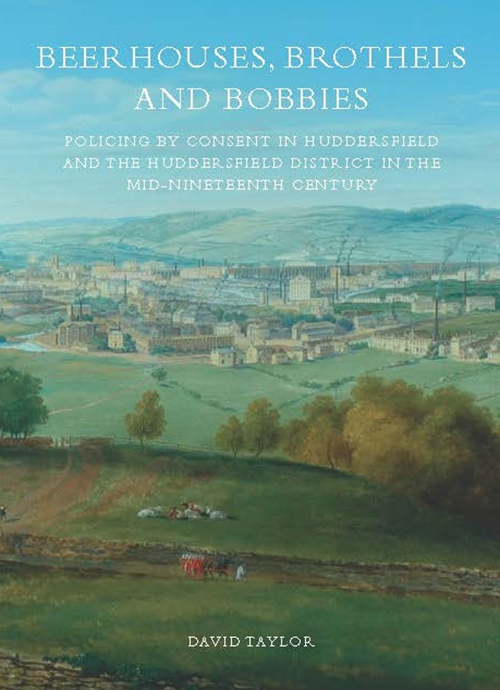Beerhouses, Brothels and Bobbies
Book Review

Policing by Consent in Huddersfield
Beerhouses, Brothels and Bobbies. Policing by Consent in Huddersfield and the Huddersfield District in the Mid-Nineteenth Century, David Taylor, University of Huddersfield Press, 2016, University of Huddersfield, Queensgate, Huddersfield HD1 3DH, e-mail enquiries university.press@hud.ac.uk
David Taylor, author of a pioneering research monograph on the development of policing in Middlesbrough, c1840-1914, in 2002 has now turned his attention to the development of policing in Huddersfield, where he is emeritus professor of history at the University of Huddersfield and a former dean of the School of Music, Humanities and Media. The alliterative title of his book, like one of his previous books Hooligans, Harlots and Hangmen, reveals the lively style adopted by the author throughout which will appeal to the general reader as much as to the academic researcher. From the outset he emphasises the importance of 1848 not so much because it was a year of revolutions across Europe but because it also saw the passing of the second Huddersfield Improvement Act which paved the way for the creation of a ‘new police’ force in the town and also the appointment of a superintending constable for the Huddersfield district, which led to an attempt to modernise parochial policing extending into Huddersfield’s rural hinterland. Taylor focuses upon developments in Huddersfield and Upper Agbrigg in the ensuing twenty-year period up to the municipal incorporation of Huddersfield in 1868, which he demonstrates also had a significant impact on local policing as Huddersfield achieved municipal borough status.
Illustrated by a series of tables, one of which shows how Huddersfield had an appreciably smaller per capita area and population to be policed than other West Riding towns, such as Wakefield, Halifax, Bradford and Leeds. Others show varying police pay rates, length of service, disciplinary records. A cluster of maps and contemporary photographs provide a visual impression of Huddersfield around this time, but show a distinctly sanitised inner urban and rural periphery of Huddersfield. Chartism by contrast with Halifax and Bradford was less prominent in Huddersfield and Taylor probes possible explanations for this, including the role of policing. By the mid-1840s, as the title of the book reveals, other problems especially in Irish-dominated areas like Castlegate, in its original location, together with adjoining neighbourhoods such as Dock Street and Upperhead Row, posed intractable problems for those responsible for maintaining law and order since ‘many of the incidents took place in yards which were contested areas – public to the police but private to the inhabitants – and were associated with familial events’, notably weddings and wakes. Moreover, employing a wider perspective, the author realistically concludes that ‘as the Huddersfield police failed to eradicate the beerhouse-brothels found across the town’ so ‘the county police were unable to stamp out cockfighting, dogfighting and prize fighting’. He concludes that ‘if widespread and active co-operation with the police is seen as a key component of policing by consent, it was conspicuous by its absence in this part of the West Riding in the mid-nineteenth century’. Finally, by exploring the diversity of those policed, he concludes that they represented ‘a heterogeneous group in mid-Victorian England’ ranging far more widely than the roughs who might have frequented the beerhouses and brothels to those who aspired to respectability, considering the different experiences of women, which differed from those of men and likewise of the Irish from the English.

